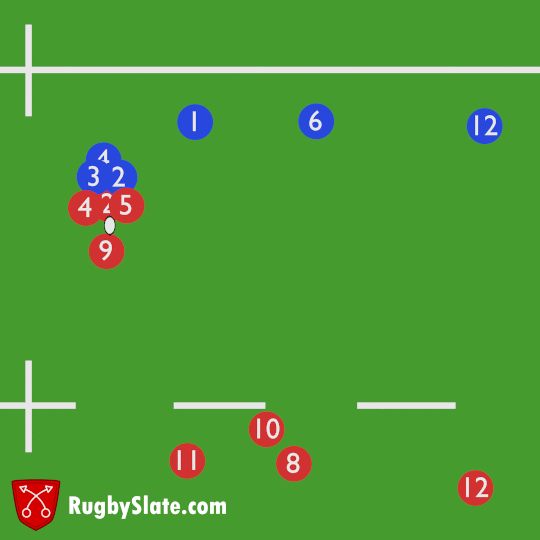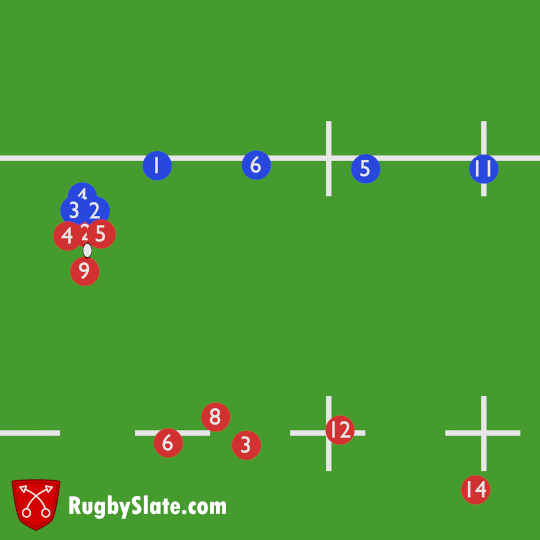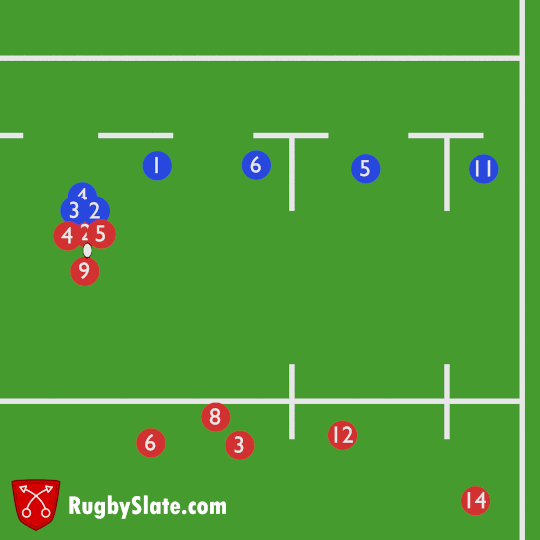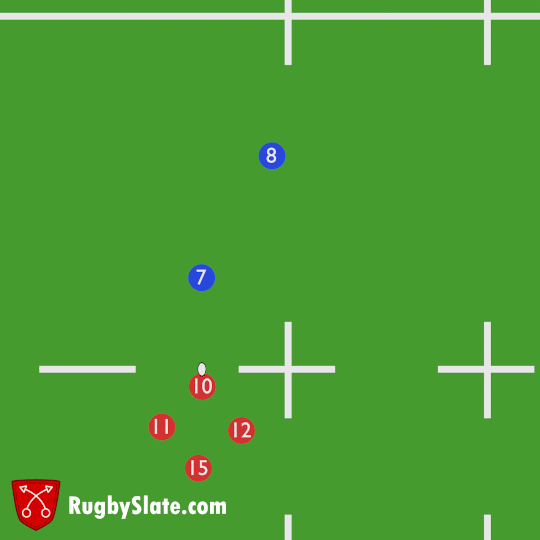Pods, Triangles and Diamonds
A very important aspect of good attacking rugby is the idea of “pods”, this is simply a small group of players close together who are able to quickly support the ball carrier in attack. This support can provide to the ball carrier options to pop the ball or alternatively, if the ball carrier gets tackled, the players in the pod are able to support them in contact. Below is an example of a pod receiving a pass for the 9. In this case, the supporting attackers are able to ruck the ball quickly and therefore allow for the 9 to pass the ball out for the next phase quickly
Alternatively, the supporting players can be used to receive a short pass at the point of contact, changing the point of attack and potentially making a line break or at least making the defence work harder in making tackles. Below shows an example of the ball carrier in the pod offloading in contact and therefore allowing the 3 to make a break.
In the above examples, the pods are made up of forwards as this is typically the case in these situations. The forwards are typically the best at being able to run “crash lines” where they intentionally initiate contact but also are typically the best at being able to ruck well so will be able to clear out the contact area quickly. However this does not need to be the case, a “pod” of backs may equally be effective.
In the below example the number 10 acts as the ball carrier with the 11 inside and the 8 outside. This combination may seem odd however it highlights how any group of players can act as a pod and use their different skillsets to contribute to the attack. The 10 has good handeling skills to offload at the right time to the 8; the 8 can take the tackle from the defence and able to offload in contact to the 11 who can use their speed and agility to get through the gap.

An important point to note is the “shape” of these attacking pods, the ball carrier is central with the supporting player behind with one each side making a triangle shape. This allows the supporting players to easy run on and receive a pass or alternatively be in the perfect position to support the contact and clear out a ruck if the ball carrier is tackled. If a fourth player is available to support the pod, they typically should stand at the back forming a diamond. If one of the supporting players is passed to then this fourth player should swing round to support the new ball carrier on the opposite side. This is most obvious in broken play, for example when receiving a kick or after a line break as shown below.
In this example the ball carrier has options either side of them so when the defender has been drawn in to making the tackle, they can offload either way. As the 12 receives the ball, they become the new ball carrier needing support so the 15 comes around from being at the rear of the diamond to being the outside support runner whilst the 9 comes in to closely support the 12 on the inside.
Working in pods and having a triangle or diamond shape is fundamental to good rugby, it can be seen at all levels of rugby. It does take practice to get to know exactly where to be when running as the supporting player; being close enough to support them in case of a ruck but far enough away to offer a passing option that challenges the defence.



